English to Portuguese translation: instant, context-aware and
AI-powered
Transform your content for Portuguese-speaking markets with AI that understands Brazilian and European Portuguese differences. From software interfaces to marketing campaigns, Transifex delivers context-aware translations that maintain your brand voice across all Portuguese-speaking regions.
Book your 30-min demo

Book your 30-min demo

Reach 260+ million Portuguese speakers with native-quality localization
Portuguese ranks as the world's 6th most spoken language and the fastest-growing European language after English. Whether you're targeting Brazil's 214 million speakers, Portugal's thriving European market, or expanding across Portuguese-speaking Africa, quality English-to-Portuguese localization drives significant business growth and customer engagement.
Why English to Portuguese translation is more complex than it looks
Converting English content to Portuguese involves navigating distinct regional variations, complex grammar structures, and cultural contexts that can significantly impact your message effectiveness in Portuguese-speaking markets.
Here's what makes it challenging:
Regional variations matter
Brazilian and European Portuguese differ in vocabulary and expressions, such as "computador" in Brazil versus "ordenador" in Portugal. Brazilian Portuguese also accepts more English loanwords and indigenous influences, while African Portuguese varieties generally follow European patterns with unique local characteristics.
Grammar complexity
Portuguese grammar poses challenges with gendered nouns that affect all related words, more than 14 verb tenses including the complex subjunctive, and regional differences in the use of formal "você" versus informal "tu." Text can also expand up to 30 percent longer than English, requiring layout adjustments.
Cultural adaptation challenges
Business culture in Brazil emphasizes warmth and relationship-building, while European Portuguese markets favor more formal and conservative approaches. False friends like "aborrecido" can cause confusion, meaning "bored" in Brazil but "annoying" in Portugal. Technical terminology also varies significantly across regions and industries.
Localization requirements
Portuguese-speaking countries use different date formats, currency symbols, and number systems. Address structures and postal codes also vary, and companies must ensure compliance with local legal and regulatory standards when localizing content for each region.

Transifex is loved by leading organizations worldwide
English to Portuguese translation at scale with Transifex
Whether you manage localization projects, develop software, or run marketing campaigns, Transifex streamlines your English-to-Portuguese translation workflow without compromising quality or cultural authenticity.
Here's what makes the difference:
AI that understands Portuguese variants
Transifex AI recognizes Brazilian Portuguese (pt_BR), European Portuguese (pt_PT), and other Portuguese locales following ISO 639-1 and BCP 47 standards. The system adapts vocabulary, formality levels, and cultural references based on your target market—using "computador" for Brazil and "ordenador" for Portugal automatically.
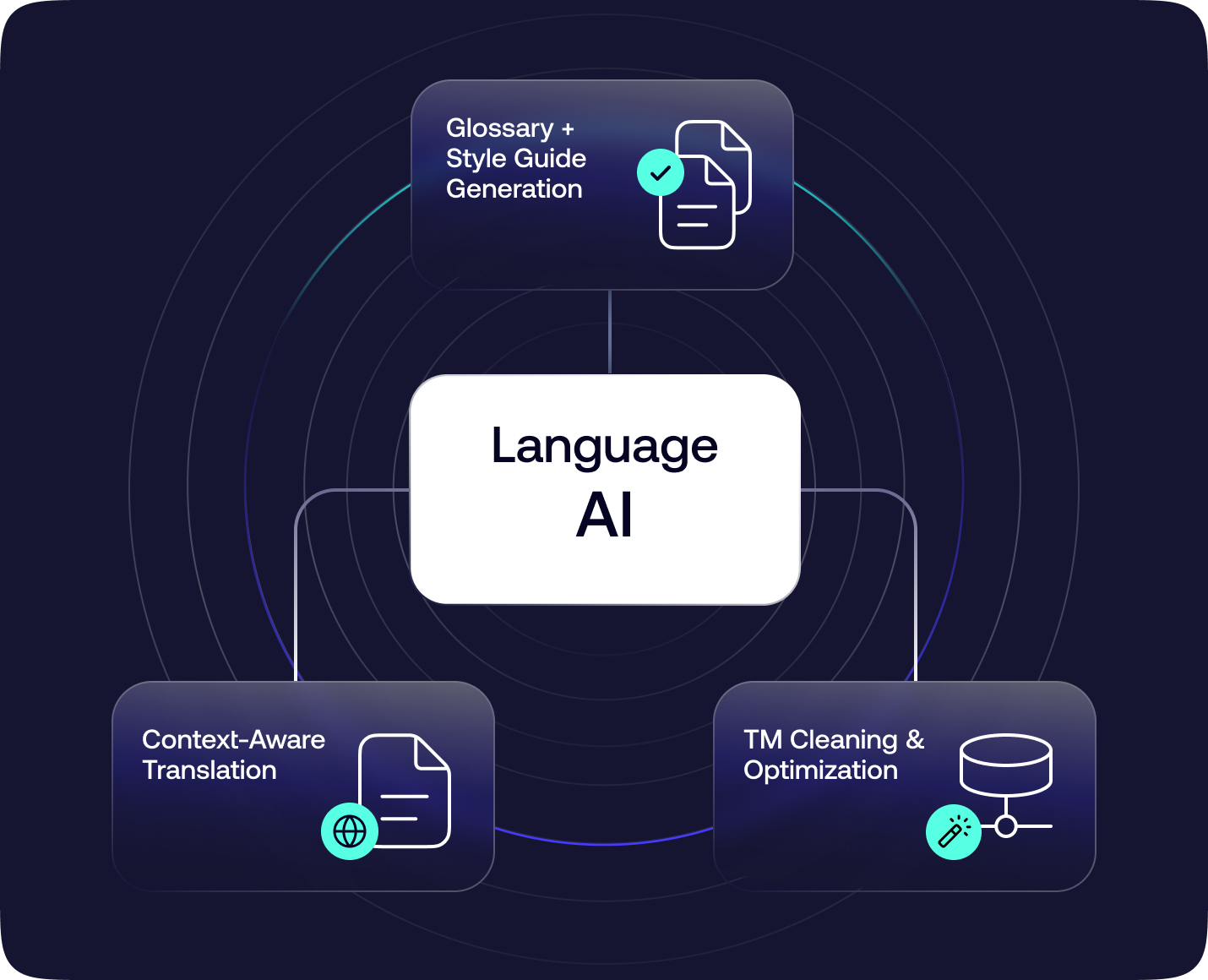
Translation memory built for Portuguese
Every approved translation builds your Portuguese terminology database using ISO/IEC 15897 standards for locale handling. When you translate "customer support" once, the system suggests it consistently across all Portuguese variants while respecting regional differences. Fuzzy matching identifies similar phrases to accelerate translations while maintaining consistency.
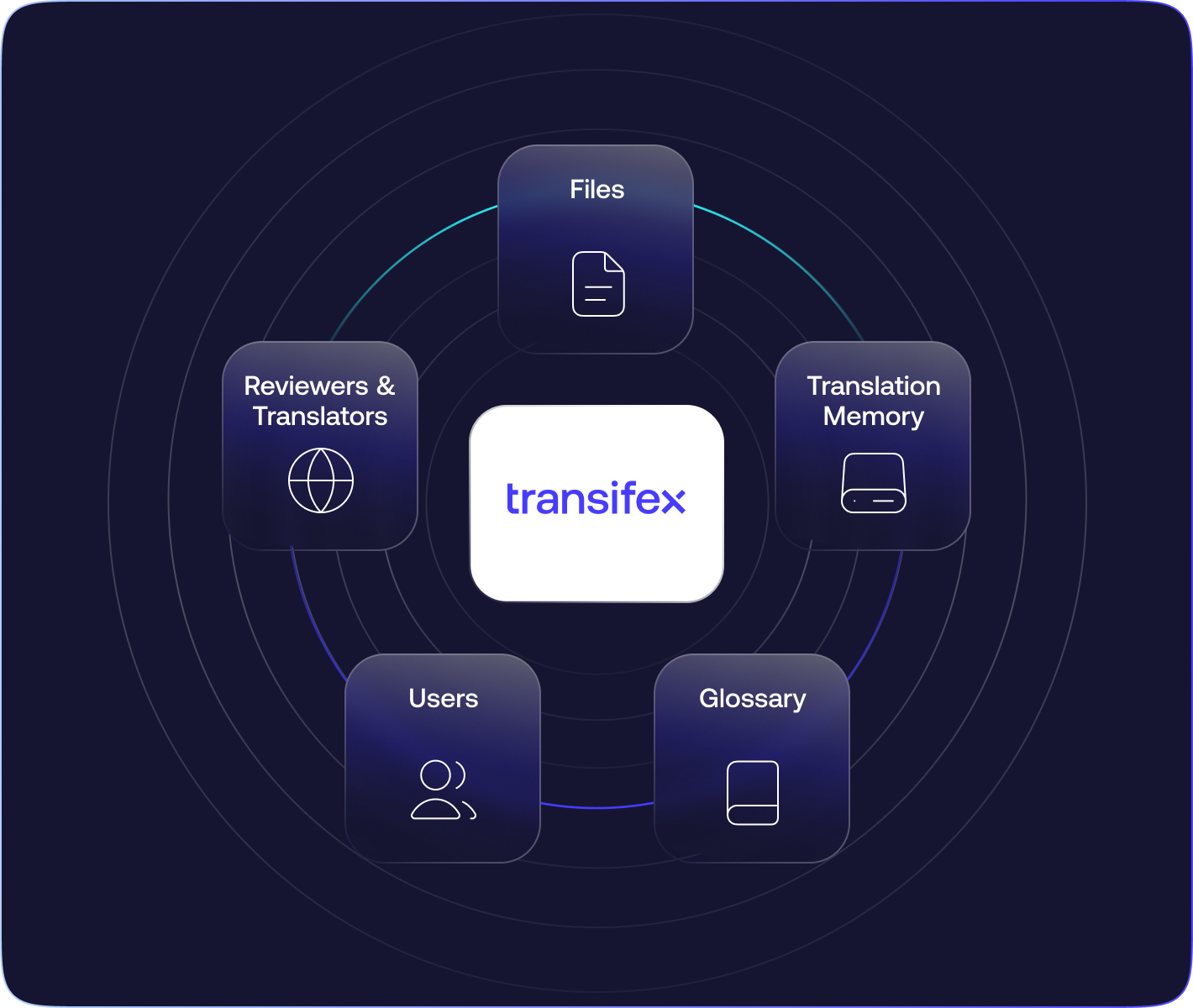
Quality scores you can trust
TQI (Translation Quality Index) automatically evaluates every Portuguese translation using three metrics: consistency across language models, structural integrity preserving HTML tags and variables, and semantic accuracy. Set thresholds to auto-approve high-quality translations (85%+) while flagging questionable content for human review.
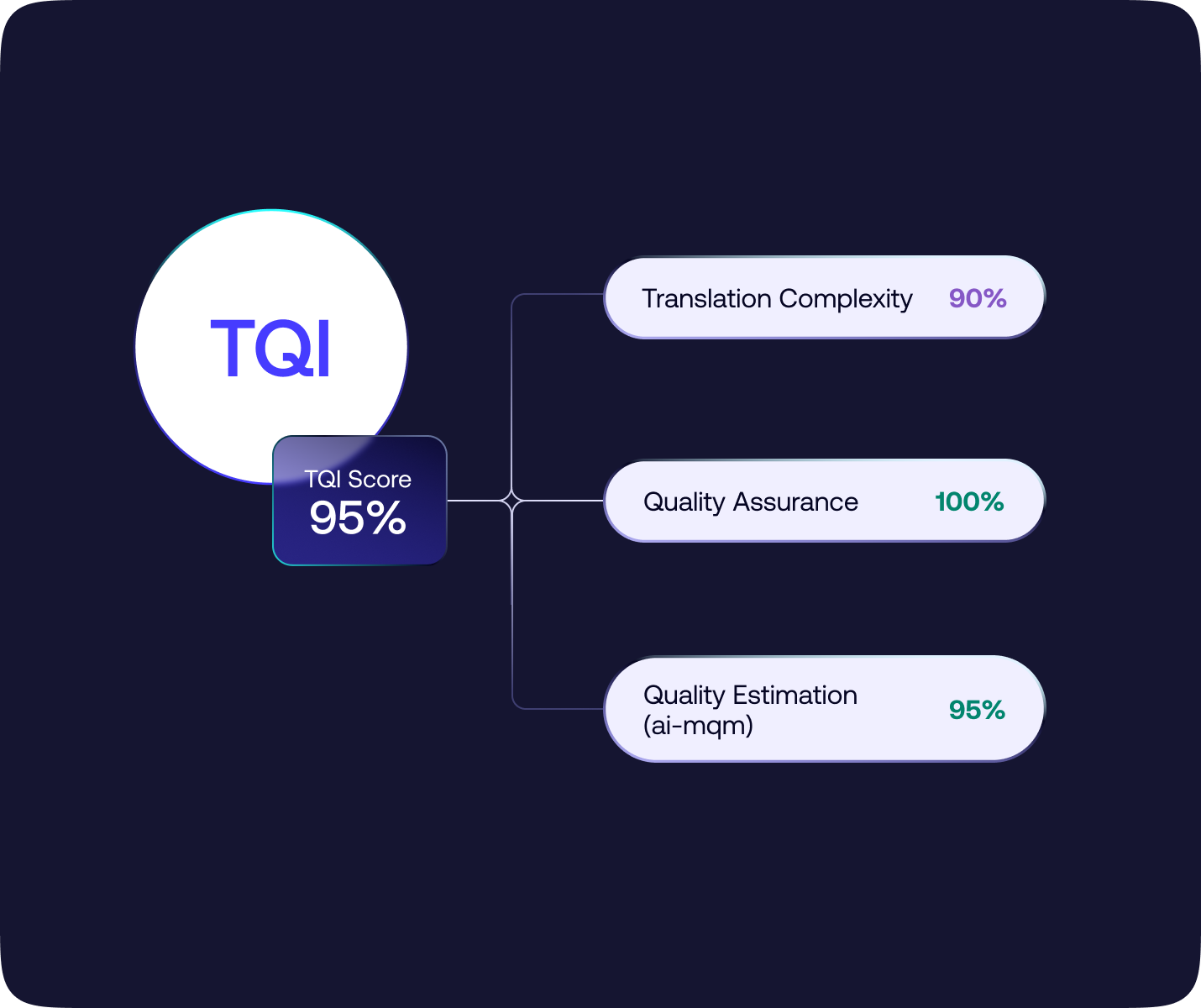
Live website translation
Install one JavaScript snippet and translate your website directly in the browser. See exactly how Portuguese text looks in buttons, menus, and content areas. Changes go live immediately without developer involvement—perfect for marketing campaigns targeting Brazilian or European Portuguese markets.
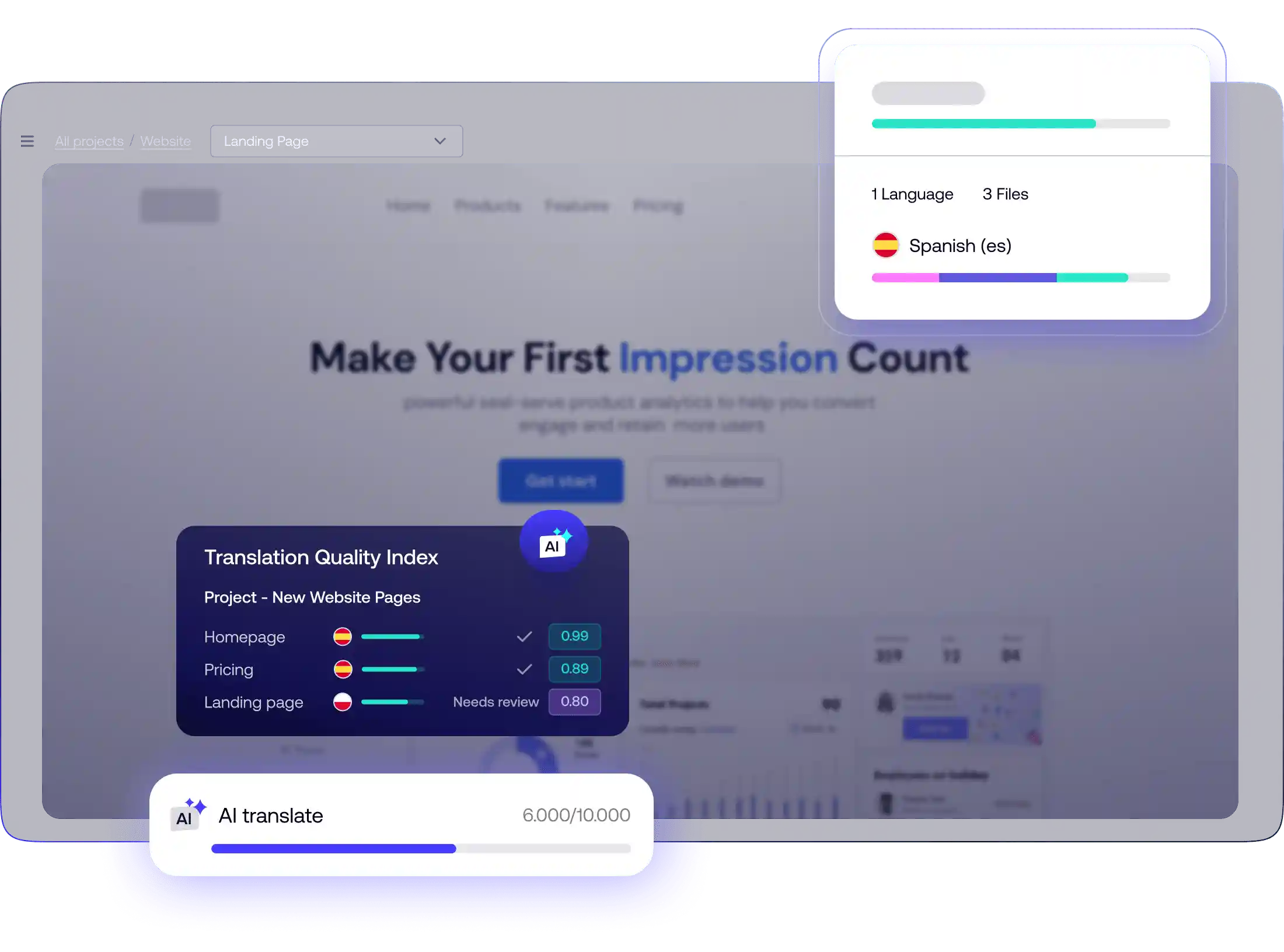




AI translation that understands cultural and business nuances
Transifex supports over 450 language locales following ISO 639-1 standards, including distinct Portuguese variants like pt_BR (Brazilian Portuguese), pt_PT (European Portuguese), pt_AO (Angola), and pt_MZ (Mozambique). The AI recognizes when to use "trem" vs "comboio" for train, or "celular" vs "telemóvel" for mobile phone, depending on your target market.
Transifex features designed for streamlined localization:
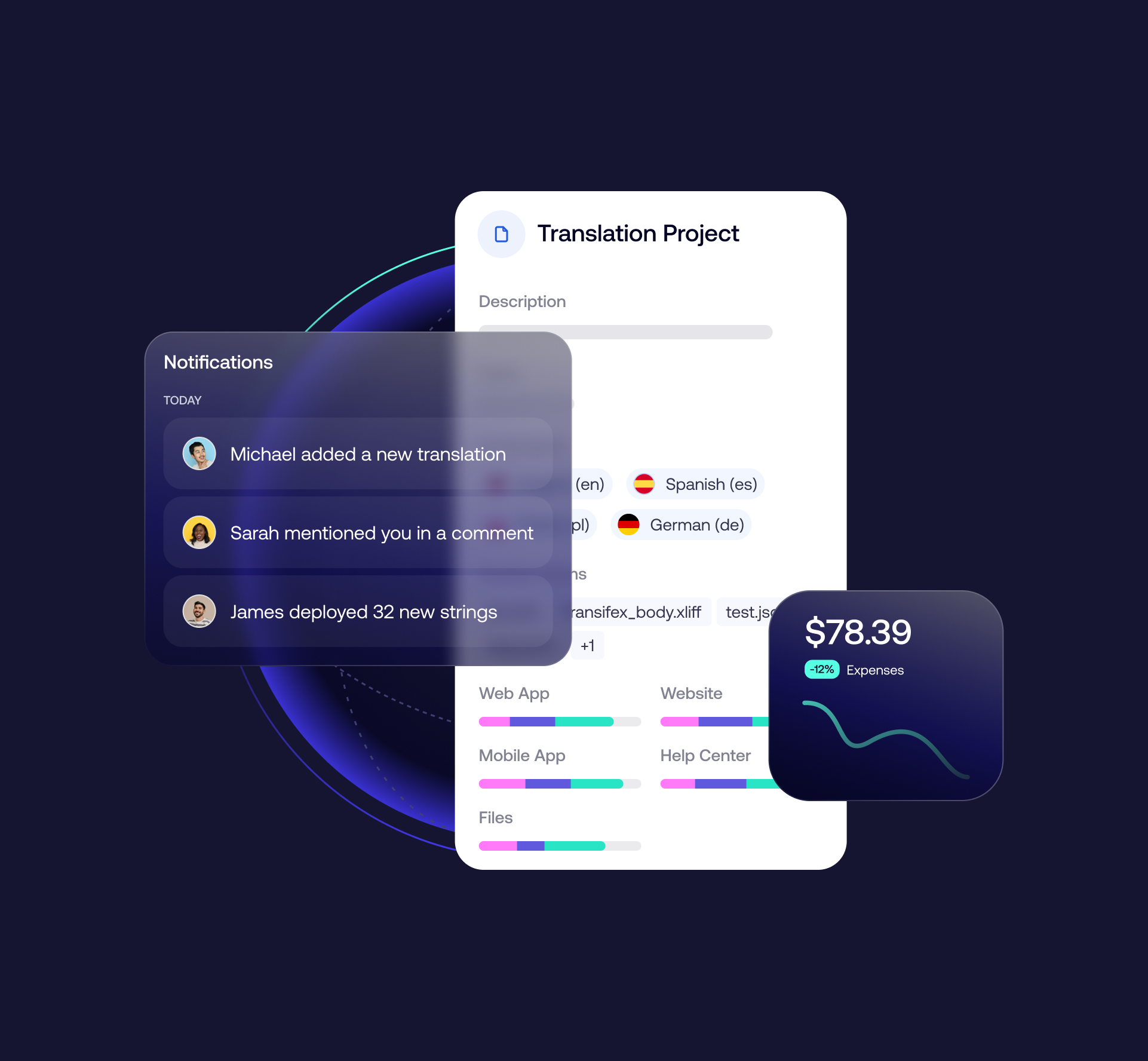
Complete project management
Set up automated workflows for Portuguese translation projects. Configure TM fill-up to instantly apply 100% matches from your translation memory. Enable AI fill-up to translate new content automatically using Unicode CLDR data for proper pluralization. Assign roles to Portuguese translators, reviewers, and project managers with appropriate permissions for different markets.
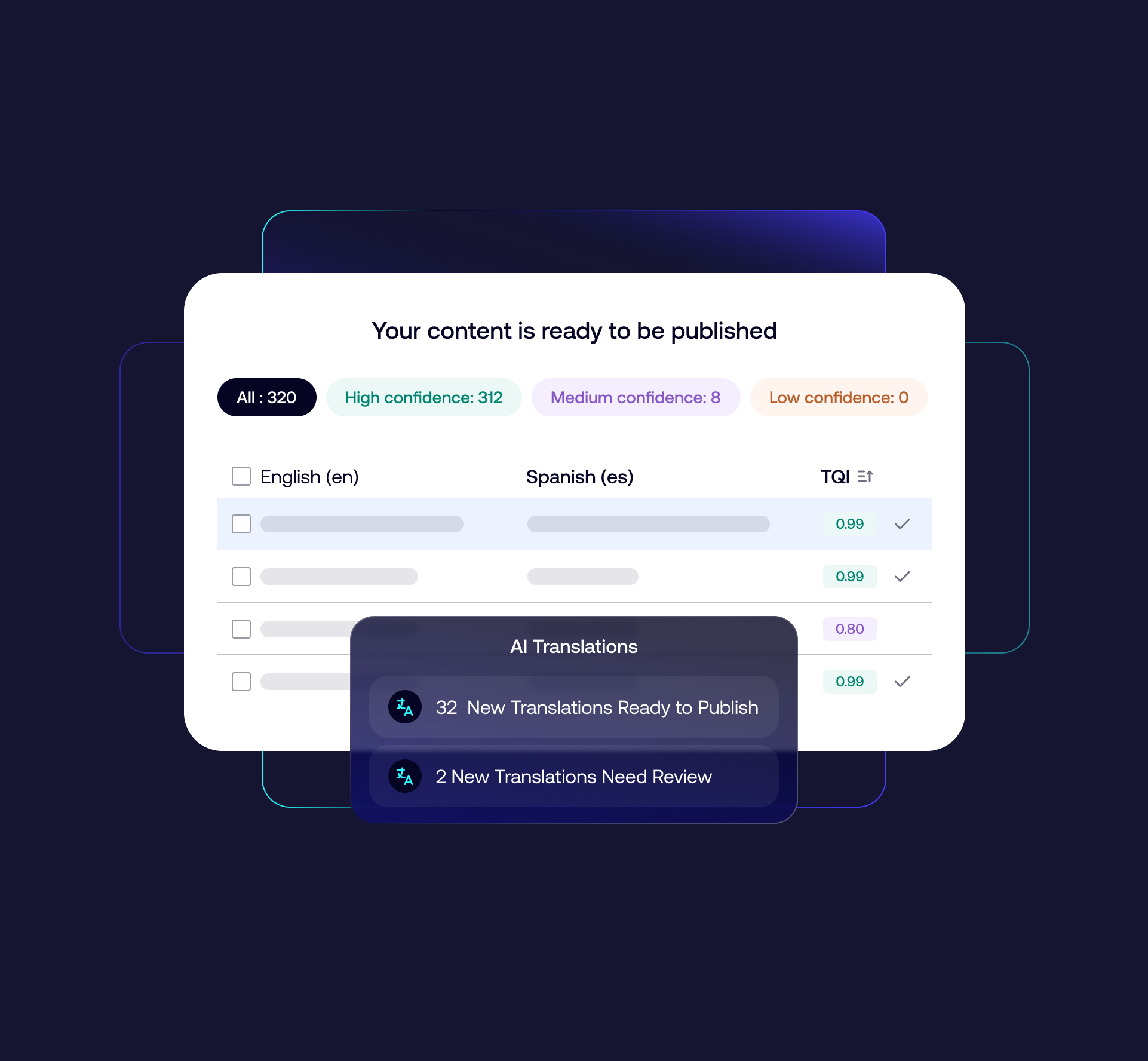
Context-aware AI translation
The system analyzes your glossary for consistent terminology, references high-similarity translation memory entries, and follows your style guide instructions. Whether you need formal European Portuguese for business documents or conversational Brazilian Portuguese for social media, the AI adapts accordingly while maintaining brand consistency.
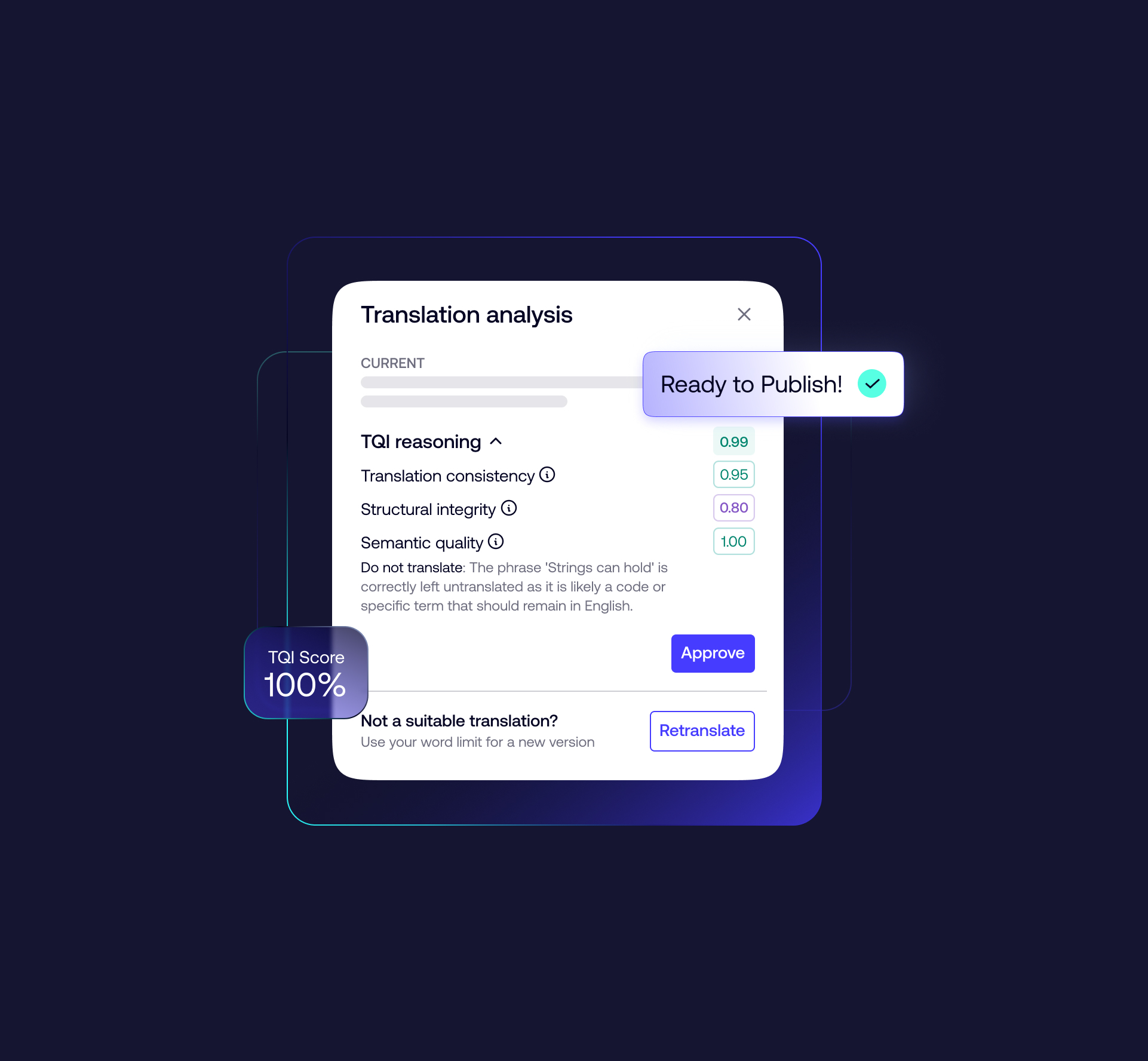
Automated quality control
TQI identifies specific issues like terminology inconsistencies, cultural appropriateness concerns, or grammatical errors. Configure workflows to auto-approve high-scoring translations (85%+), route medium-scoring content for quick review, and flag low-scoring translations for comprehensive revision. Track quality trends to improve future Portuguese translations.
Built for product, marketing, and localization teams alike
Marketing Managers
Launch global campaigns faster
Create localized Portuguese content that matches your brand voice across Brazilian, European, and African markets. With context-aware translations, marketing teams can move fast, stay consistent, and never miss a campaign window—no dev help required.
Developers
Localization built for agile teams
Take Portuguese localization off your backlog with a platform built for high-frequency content updates. Seamlessly integrate into your CI/CD workflow using our extensive API, SDKs, and CLI tools with full ISO standard compliance.
Product Teams
Launch multilingual products faster
Accelerate product launches with automated Portuguese localization. Integrate seamlessly into your development workflow and ensure your applications speak every user's language from day one with proper locale handling.
Localization Managers
More efficiency, more localized content
Localize more Portuguese content with less effort on an all-in-one platform. Bring all stakeholders together, streamline collaboration, and deliver authentic, on-brand Portuguese translations efficiently for every market.
The only localization platform with native support for over 46 different content types
Translate any type of English content into Portuguese—no conversions or plugins needed.
Web and
mobile UI
YAML (.yaml/.yml), JSON (including structured JSON), Gettext PO/POT, Android XML, Apple .strings / .stringsdict
Technical documentation
Markdown (.md / .mdx), Wiki markup (.wiki), XLIFF (.xliff/.xlf/.xml)
Marketing
assets
PowerPoint (.pptx), HTML / XHTML, Landing pages
Fileless (API-based content)
Phrase-based localization from APIs, Figma plugin, HubSpot—uses ICU syntax, supports metadata, and exports as JSON or XLIFF
Business and legal documents
Microsoft Word (.docx), Excel (.xlsx/.xlsm/.xltx/.xltm), PDF (via conversion)
Subtitles and video captions
SubRip (.srt), SubViewer (.sub), YouTube captions (.sbv), WebVTT (.vtt)—translated in-context with built-in editor preview

Automate Portuguese localization—without the headaches
Transifex helps you translate English to Portuguese with speed, precision, and automation—all while maintaining brand consistency and cutting manual work.
Launch new content, reach Portuguese-speaking markets, and scale your multilingual strategy with confidence.
Frequently asked English to Portuguese questions
Still got questions? Talk with the Transifex team to see how you can improve the quality of your Portuguese translations and save money.
How many people speak Portuguese globally?
Portuguese is spoken by approximately 260+ million people worldwide, making it the 6th most spoken language globally. Brazil accounts for 214 million speakers, Portugal has 10.6 million, and significant populations exist in Angola, Mozambique, and other Portuguese-speaking countries across four continents.
What's the difference between Brazilian and European Portuguese?
While mutually intelligible, Brazilian Portuguese (pt_BR) and European Portuguese (pt_PT) differ significantly in vocabulary, pronunciation, and formality. For example, "computer" is "computador" in Brazil but "ordenador" in Portugal. Brazilian Portuguese is more informal and incorporates more English loanwords, while European Portuguese maintains more traditional structures.
Why is Portuguese important for business expansion?
Portuguese is the fastest-growing European language after English and serves as the official language in 9 countries. Brazil alone represents the 8th largest economy globally, while Portuguese-speaking African markets are experiencing rapid economic growth. The language provides access to diverse markets across multiple continents.
How does Transifex handle Portuguese regional variants?
Transifex supports multiple Portuguese locales following ISO 639-1 and BCP 47 standards, including pt_BR (Brazil), pt_PT (Portugal), pt_AO (Angola), and pt_MZ (Mozambique). Our AI automatically adapts vocabulary, formality levels, and cultural references based on your specific target market.
What industries benefit most from English to Portuguese translation?
Technology, e-commerce, finance, healthcare, and tourism industries see significant benefits from Portuguese localization. Brazil's growing tech sector, Portugal's strategic European position, and expanding African markets create opportunities across software localization, digital marketing, legal documentation, and customer support.
Can Transifex handle technical Portuguese translations?
Yes, Transifex supports technical translations across industries with specialized terminology management. Our Translation Memory and Glossary features ensure consistent use of technical terms, while TQI quality scoring identifies potential issues with complex terminology or regulatory compliance requirements.
How long does English to Portuguese translation take?
Translation speed depends on content volume and complexity. Transifex AI provides instant translations with TQI quality scoring, while human review processes can be automated based on quality thresholds. Most projects see 70% faster completion times compared to traditional translation workflows.
Learn more about scaling your software localization efforts
Software localization is more than the translation of your product UI. Different language settings, plural forms, frameworks used and visual relevancy factors are only a few other things to consider.




